In every ultra I’ve run, Chester 100, The Bacons Way 100, Race Across Scotland (RAS) 215, among others, there have been many things that tested me. The miles, the heat, the elevation, the night, injury. But if I had to pick one common thing that carried me through more than any other, a place that seems simple yet is absolutely essential, it’s the checkpoint. Not just a pit stop to refuel, but the heartbeat of the race.
This year I’ve been on the other side a few times, volunteering at races and running checkpoints the latest being at the inaugural Cheshire Ring 100. Until the first time I supported on a checkpoint, I didn’t really appreciate just how important they were to runners and just how much organisation goes into them from the volunteers.
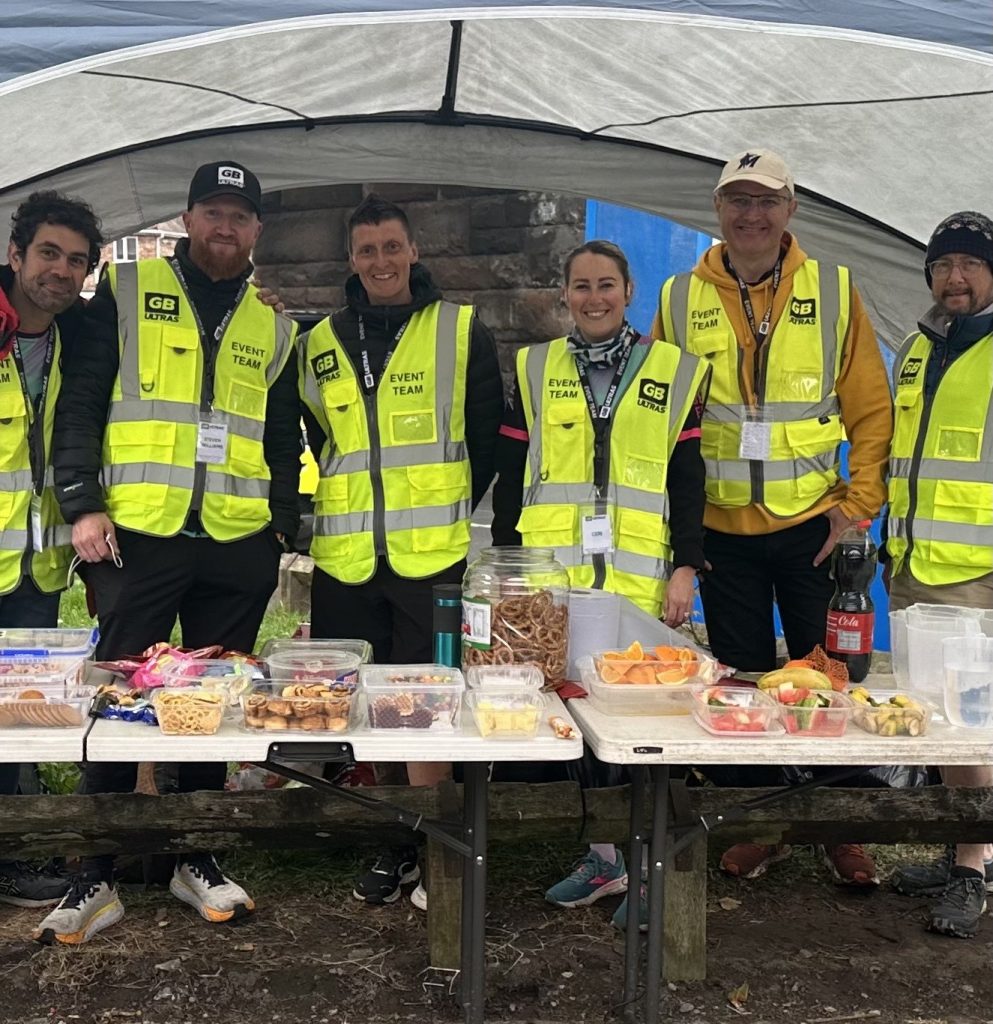
The volunteers ensure every single person passes through safely and has the best possible positive experience they can to keep them pushing on to the finish line. They are enthusiastic, helpful, supportive individuals, some funny, some serious, some bonkers, but all have a common passion for the sport of ultra running.
From the other side, I have experienced the fast-paced environment of a checkpoint, the wacky, the emotional, the failures, the success’, the funny, the sad. That’s why the checkpoint is the heartbeat of the ultra.
Here’s what I’ve learned from being there, arriving at one, leaving one, from being both a competitor and a volunteer.
What a Checkpoint Gives You (Beyond Supplies)
Refuelling & Gear Reset
At Ultra Trail Snowdonia 100km, Checkpoint 2 (after about 23km) was a moment of both frustration and relief. Supplies were low; I had to wait for water and food. But thankfully, I’d brought extra with my crew, who was waiting at that checkpoint. I managed to change my socks, applied a top up of sunscreen and got to reset mentally for what was coming, another massive climb!
At Chester 100, one of the checkpoints (Checkpoint 9, at Spike Island, 69 miles in) was exactly that: clean clothes change, adding layers, reloading supplies, and mentally switching into “the night shift” mode. That checkpoint wasn’t just about resupplying. It marked a clear shift in the race. A mini goal achieved for a strategy on surviving and thriving in a 100-mile race.
Mental & Emotional Boost
Check points aren’t just tables with food and drink; they are energy hubs. At the Race Across Scotland, I arrived at a checkpoint in the second day. The sun was high in the sky, it was a hot day, supporters were sat outside cheering every runner and the volunteers inside were handing out ice pops to keep us cool. This was a life saver and boosted our spirits for the next section.
Also at RAS 215, checkpoint 11 also had that effect. I was running on fumes, severely sleep-deprived and hallucinating a little. But then I get to the checkpoint, see friends, eat something hot (ham & cheese toasties with pickle and tomato), drink coffee, and suddenly the fatigue is still there but less crushing. The friendly human connection matters and re-ignites that fuel to keeping moving on.
Decision Points & Course Resetting
At UTS 100km, by checkpoint 6 (82km into the race, midnight) the dark had fully taken hold. I was physically and mentally in a rough place: vision blurry, physically sick until I was dry retching, extremely dehydrated. The checkpoint there forced me to make a decision: push on or stop. It allowed me a brief reset, consulting the medical team, making sure I had fluids, trying to eat something. It was safety as much as support. But after a check of my vitals by the fantastic medical team, I was pulled from the race for my first DNF. A well-positioned checkpoint, that may have cost me my race but certainly saved my life.
Similarly, during Chester 100, checkpoint 7 and later checkpoints weren’t just about topping up drinks. They were where I checked in with my body. Tight hip flexors, hunger, core temperature and made small changes, layers, food types, walking vs running, stretching, that kept me from blowing up later.
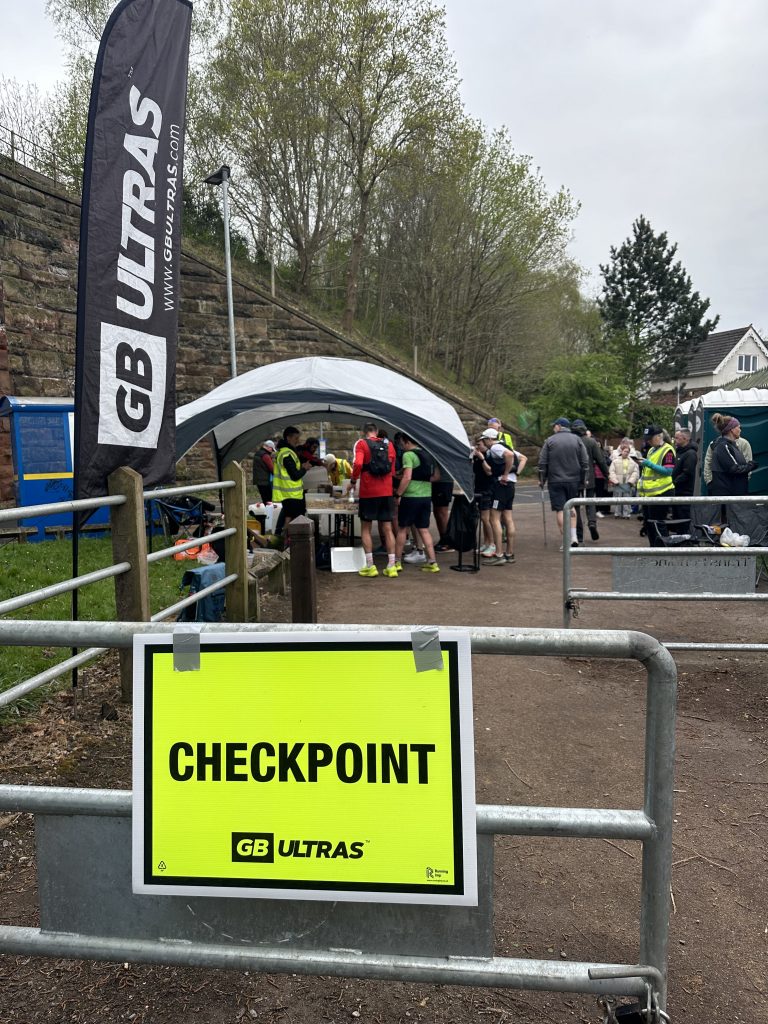
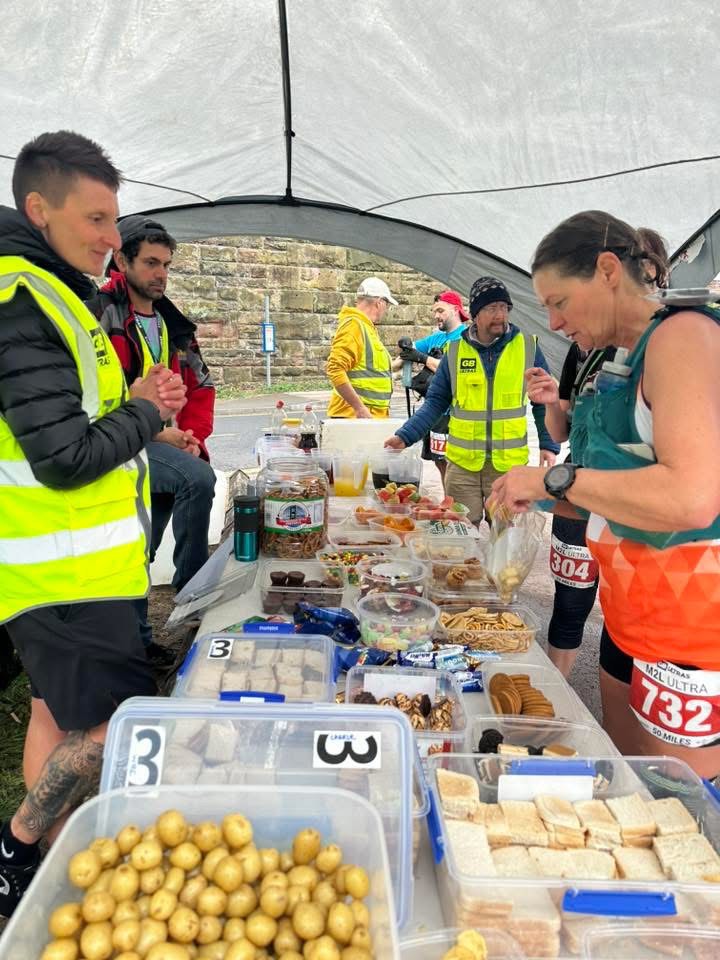
What Makes a Great Checkpoint (Based on My Experience)
Not all checkpoints are equal. Some will uplift; others will feel like bottlenecks. From my races, here are what I believe are the key elements of a proper, well organised checkpoint that will set you up to finish your race.
Reliability & Stock – When you arrive expecting water, fuel, and it’s missing, it can throw you. At UTS100km, checkpoint 3 was low on supplies, which meant I had to hold off doing what I wanted and getting what I needed, because the checkpoint was waiting on re-supply from HQ. I missed out on much needed food and carb drink, which ultimately cost me my race and was a massive factor in my DNF.
Quick & Efficient Volunteers – Speed matters; sometimes the ability to refill, change socks, eat, and get out is the difference between feeling good or suffering miles ahead. At Chester 100, the volunteers at several checkpoints got me fed quickly (cheese on toast, coffee, etc.), and that kept momentum for me and on target for my time goal. If you ever experience a GB Ultras check point, you’ll know just what I mean, the cheese on toast is something different!
Comfort / Shelter / Shade – When it’s hot, shade and shelter are precious, especially for me anyway. Also, somewhere to sit, or at least lean. A well-placed checkpoint can be a life saver through the heat of the day or the heavy rain and wind through the night. Checkpoint 3 at Ultra Scotland 100 this year was just that. The heavens opened on the descent into the checkpoint. The checkpoint gave me the chance to shelter, reset and change (and a waste a little time for the rain to fade), before heading back out into the mountains.
Drop Bag / Crew Access – Personal supplies, changes of socks, clothing, rewards or treats etc. At the Beacons Way 100, checkpoint 10 was well placed to set me up for a strong finish. My crew had access and had milkshakes and Jaffa cakes ready for me. Little rewards for the tough night section and a treat to push me on towards a gold buckle.
Ability to Repair / Recalibrate – Sometimes fixes are physical, new socks, perhaps blister care. But some fixes are mental, encouragement, rest or strategic, like changing type of fuel. A great checkpoint gives you space for these small repairs. Because in ultras, every small breakdown matters, a minor issue can quickly become a major problem.
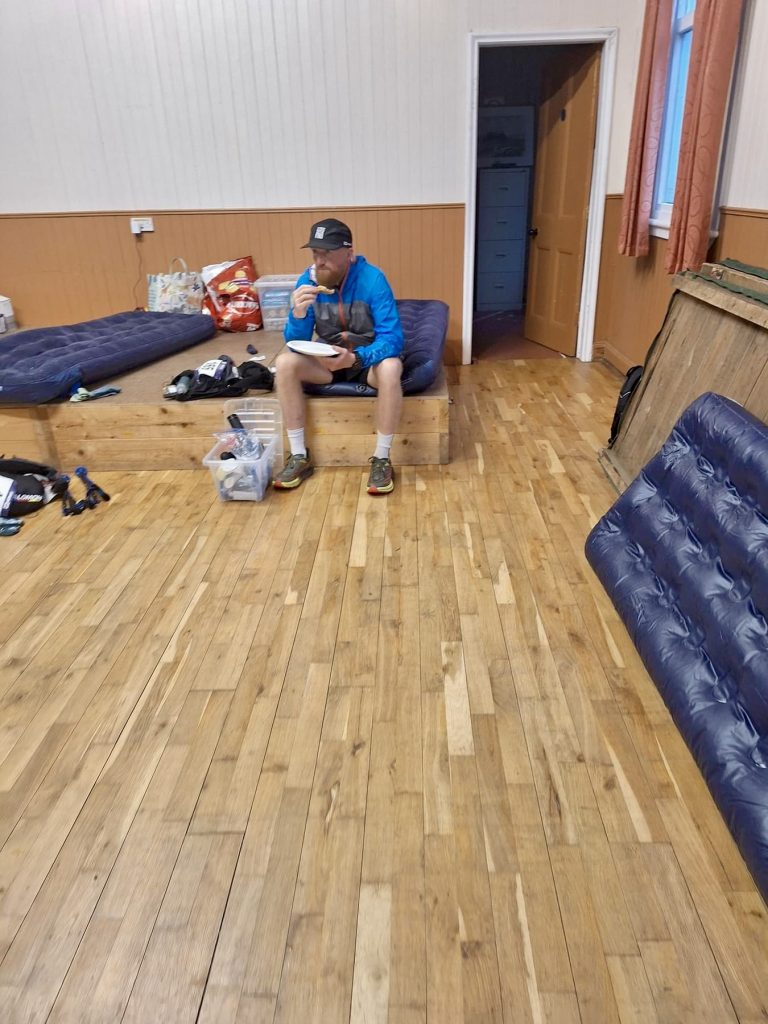
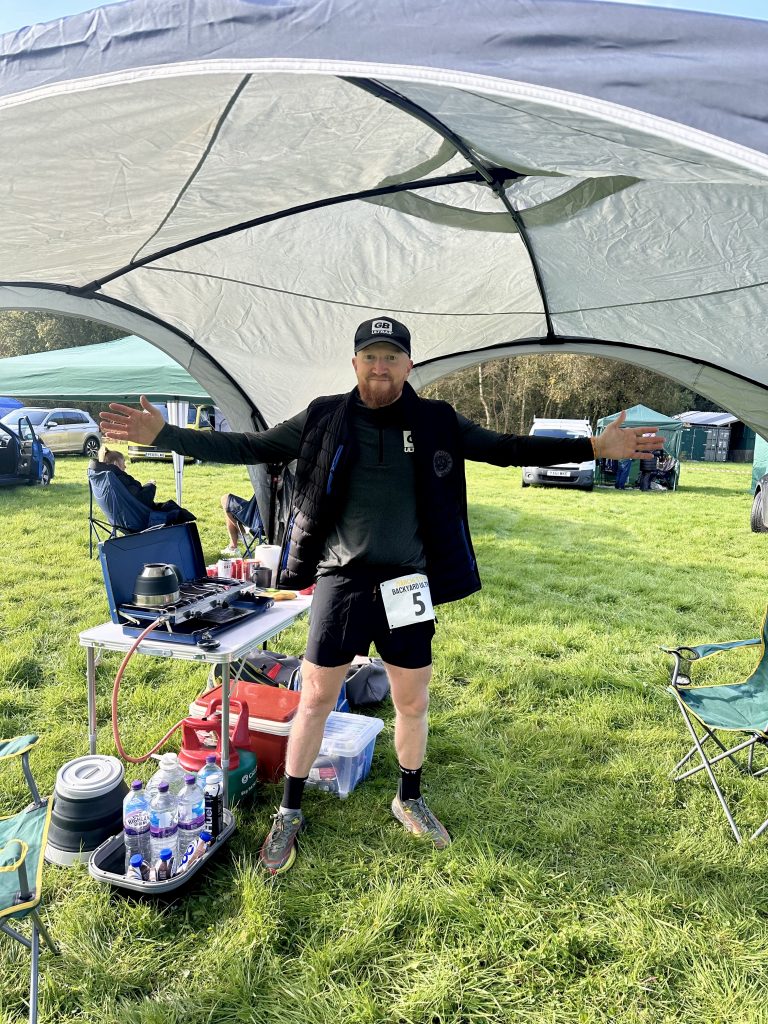
When Checkpoints Let You Down — Lessons Learned
Even though most checkpoints have been brilliant, I’ve had moments where things went wrong:
- At UTS 100km, checkpoints were very low on stock. That meant me waiting around, grabbing what was available, if anything at all, rather than ideal fuel, which makes a difference when you’re already fading, and the weather is extreme.
- Heat exhaustion and dehydration snuck in because I waited too long to fill my bottles and drink enough, partly expecting the next aid station to be more fully stocked. That gamble didn’t pay off. I had limited chances to fill up from natural water sources.
- Checkpoints not having enough seating space or sleeping space for a race that is at full capacity, very busy and congested and the duration runs through the night. Having this adequate space is essential to allow every single runner the space to maximise their chances of finishing. I ended up sat on the grass in the midday heat at UTS100km, not ideal for allowing me the time to mentally and physically prepare for the next climb.
These moments taught me that part of respecting the checkpoint means planning for worst-case. I now always carry extra, I anticipate delays, I have fallbacks for what I’ll eat and drink when what I expected isn’t there.
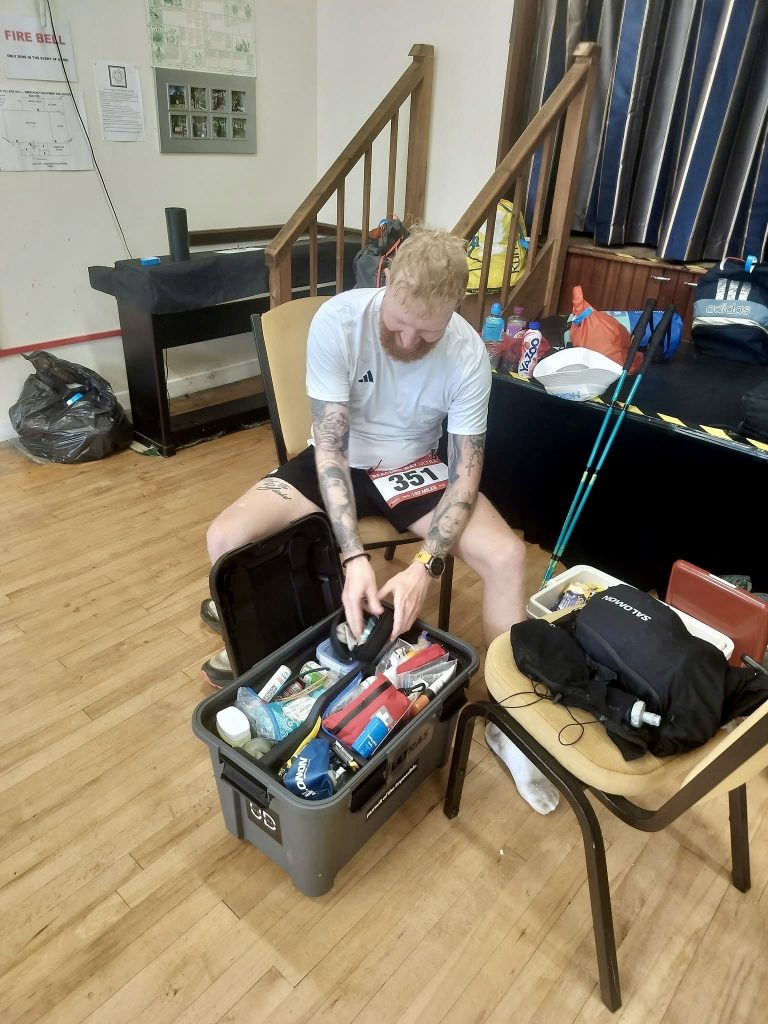
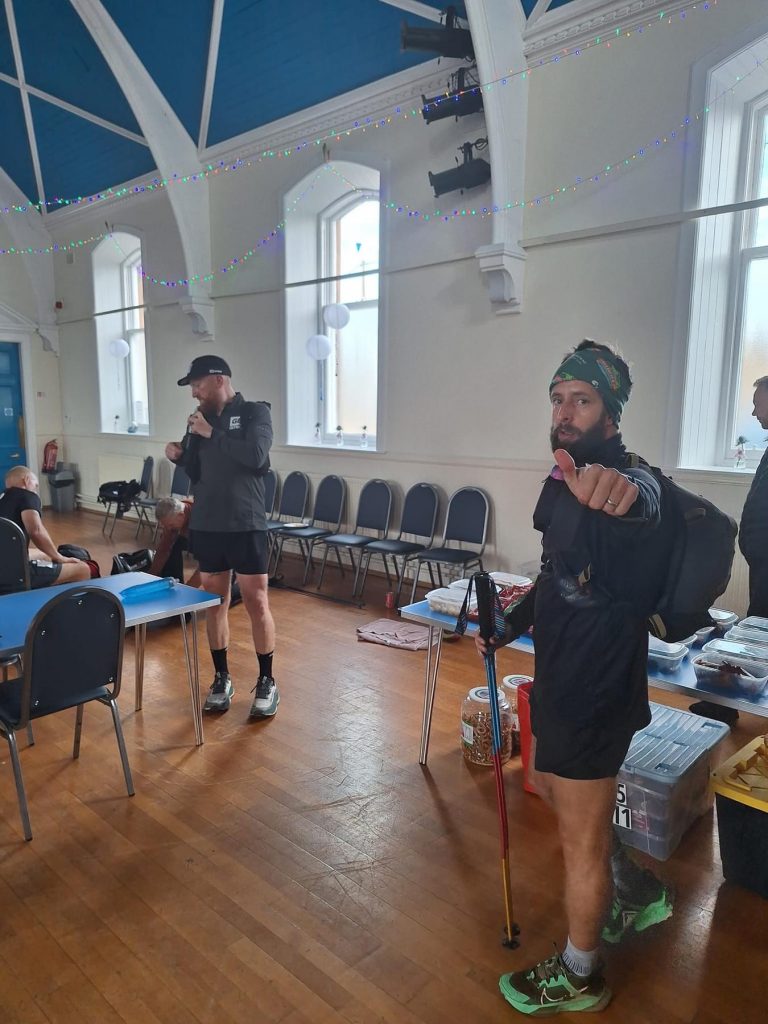
How to Make the Most of Checkpoints (Tactics I’ve Used)
Based on what I’ve done in these races, here are strategies that helped me squeeze the most benefit out of each check point:
- Plan ahead but stay flexible – Before races I note what check points allow drop bags or crew, what their food and drink offerings are, distance between them, not just for me running, but my crew if I have one. I include this information in my race plan.
- Prioritise rests / small comforts when needed – Even a minute or two sitting, eating something hot, changing socks, having a clean with a wet wipe, brushing my teeth, can shift how you feel. It’s not lazy, it’s strategic, it’s refuelling your system physically and mentally.
- Use checkpoints as mental check in points – Each checkpoint marks a milestone on your journey to completing that race. I often reset my race goals and make new ones in checkpoints, “Just get to the next one by 3am,” or “after this one I’ll reassess my ETA and take an extra bottle.” It breaks the ultra into manageable bits.
- Gear checking – I always check my gear, are my shoes still okay? Socks sweating or rubbing? Do I need an extra layer when heading into the night? At Chester 100, adding layers & switching on headlamp at the checkpoint at Spike Island was more than just comfort, it was me getting comfortable with my survival strategy.
- Nutrition diversity – Gels are not for me. Having checkpoints offering real, solid food (soup, toasties, fruit, crisps etc.) was a lifeline.
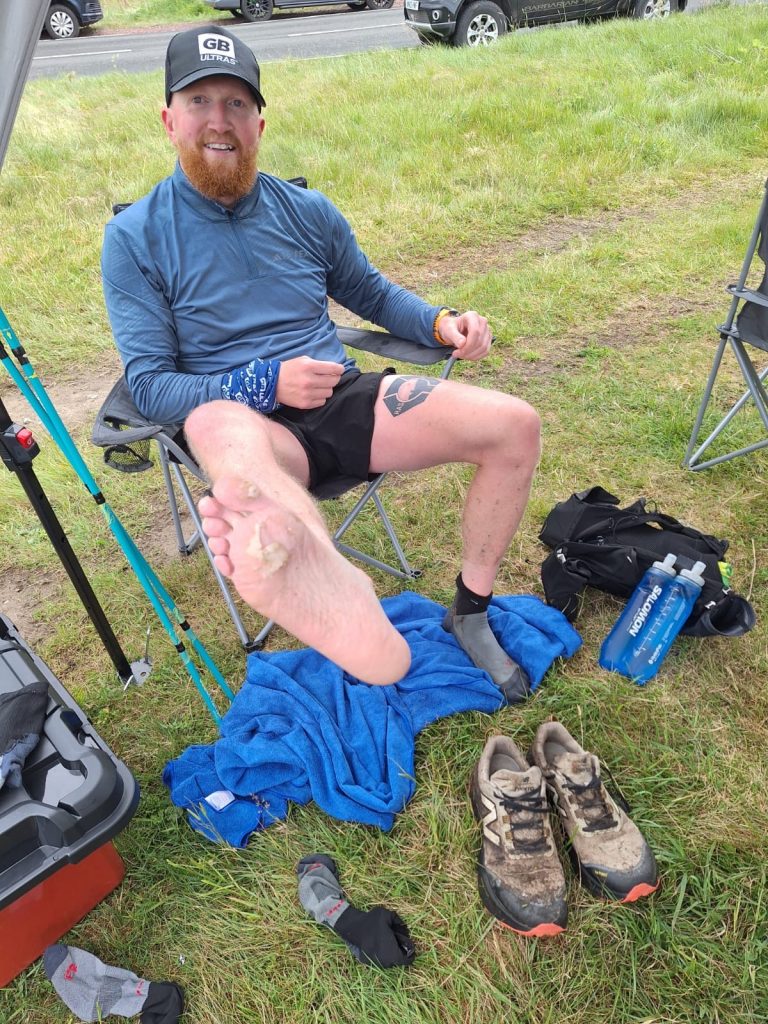
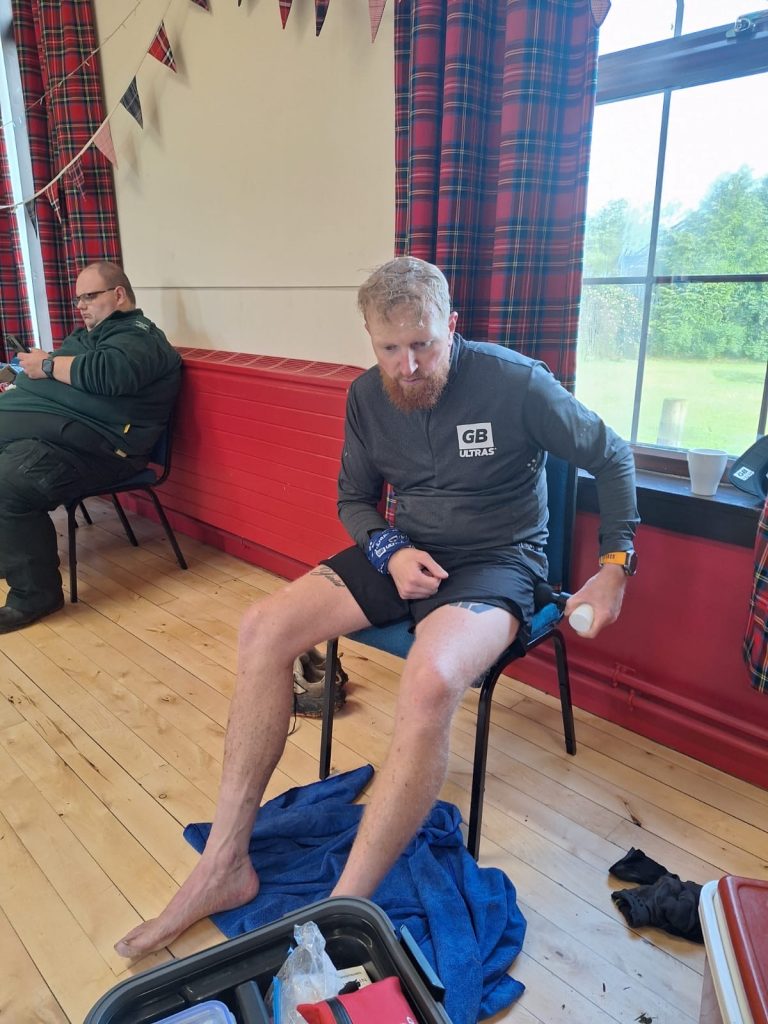
The Checkpoint Process
Some people may think checkpoints magically appear. They don’t. If you haven’t volunteered at a checkpoint. It’s difficult to fully understand the planning and organisation that goes into the set-up process. So here goes.
Arrive and inspect the area to ensure it is left just as it is found and leave no trace. Unload the checkpoint equipment and erect the event shelter in a suitable location, ensuring suitable room for flow of runners at peak times and to ensure the public can pass through safely and not be obstructed.
Set up tables and set out the food and drinks so easily accessible. Set up waste disposal plan, set up water filling strategy, set up event signage, set out seating, set out refill and restock strategy.
Hold a team briefing with the other volunteers to set roles and responsibilities. Set out the anticipated timings for the checkpoint. Expected time for front runners, expected numbers for peak arrival time, closing time. Explain strategies for emergencies and set out the safety plan and action plan.
Ensure every runner is checked in and out, ensure every single person is given the same support, whether the first or last runner. Provide a place the runner can carry out basic admin, restock, rest and reset if needed. Check in with each runner, ask if they need anything, ask how they are feeling, congratulate them on how far they have come and give them that moral boost. Visually assess their behaviour and look for signs of struggle or injury.
Only when the last runner passes through does the checkpoint close, whether within the cut off time or not. All food and drink options and amenities are available to every competitor.
The checkpoint equipment is taken down and stored with the next event in mind. The paperwork that has accounted for each entrant is checked, signed and returned to HQ. All signage taken down and a sweep of the surrounding area is done to make sure any litter is removed, and no trace is left that we have even been there.
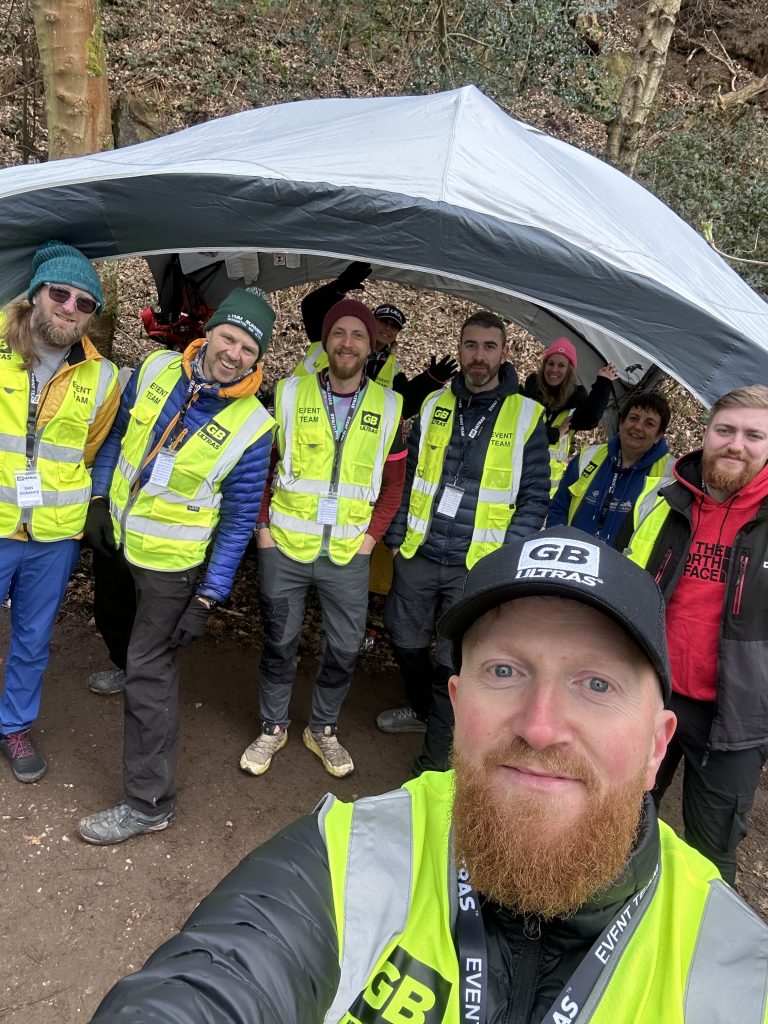
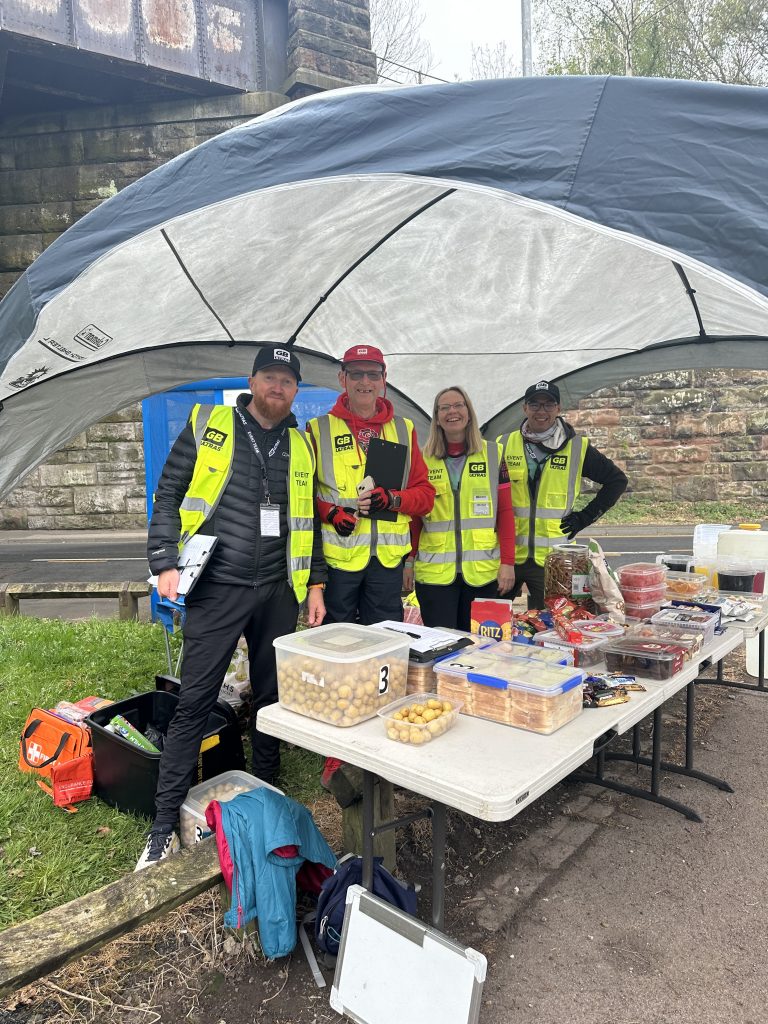
Why Checkpoints are Unforgettable
Checkpoints are more than functional. They’re emotional, symbolic. They’re where you feel seen when you’re at your lowest; volunteers cheering and seeing other runners who’ve also been suffering. They mark progress: “I’ve done this far,” “I passed this mountain,” “night is approaching but I’m still going.” They create memory anchors. The cold of early morning in RAS 215 at CP12, the heat in Snowdonia midway, the quiet moments in Chester through the night. These moments stick with you.
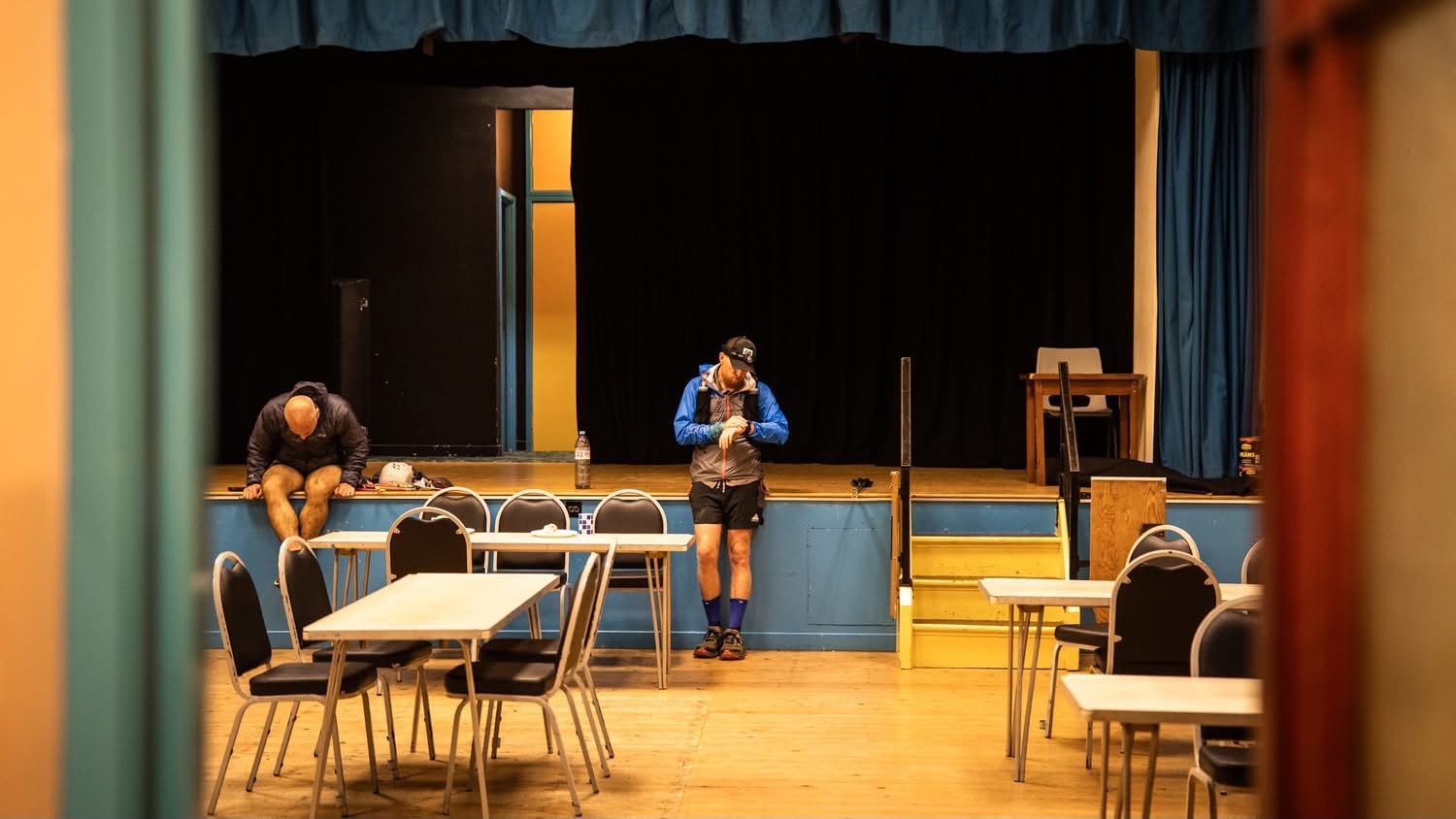
The Check Point is the Beating Heart
When I think about how I finish ultras, or don’t, I realise that aid stations are woven through my race stories, sometimes the sharpest memories are off the trail, under a gazebo, eating something hot, listening to volunteer chatter, cracking jokes with others, sharing stories, hearing the volunteers support.
They are the moments you pause, reset, recalibrate, and step back out. Without them, an ultra would be a very different creature, less communal, more punishing, less forgiving of human frailty.
So, the next time you race, don’t just see a checkpoint as a necessary stop. See it as your chance to renew. To patch up. To take in what’s around you, to share the suffering and the small joys with others. That’s where the heart of an ultra beats.


Leave a Reply